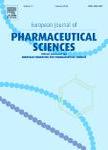版权所有:内蒙古大学图书馆 技术提供:维普资讯• 智图
内蒙古自治区呼和浩特市赛罕区大学西街235号 邮编: 010021

作者机构:Katholieke Univ Leuven KULeuven Fac Biosci Engn Dept Biosyst B-3001 Heverlee Belgium Univ Fed Paraiba CCEN Dept Quim BR-58051970 Joao Pessoa PB Brazil Inst Tecnol Aeronaut Div Engn Eletron BR-12228900 Sao Jose Dos Campos SP Brazil Vrije Univ Brussel Ctr Pharmaceut Res CePhaR B-1090 Brussels Belgium
出 版 物:《EUROPEAN JOURNAL OF PHARMACEUTICAL SCIENCES》 (Eur. J. Pharm. Sci.)
年 卷 期:2014年第51卷第1期
页 面:189-195页
核心收录:
学科分类:1007[医学-药学(可授医学、理学学位)] 10[医学]
主 题:Antileishmanial activity Successive Projections Algorithm Linear Discriminant Analysis Genetic Algorithm One Nearest Neighbour
摘 要:Chalcones are naturally occurring aromatic ketones, which consist of an alpha-, beta-unsaturated carbonyl system joining two aryl rings. These compounds are reported to exhibit several pharmacological activities, including antiparasitic, antibacterial, antifungal, anticancer, immunomodulatory, nitric oxide inhibition and anti-inflammatory effects. In the present work, a Quantitative Structure-Activity Relationship (QSAR) study is carried out to classify chalcone derivatives with respect to their antileishmanial activity (active/inactive) on the basis of molecular descriptors. For this purpose, two techniques to select descriptors are employed, the Successive Projections Algorithm (SPA) and the Genetic Algorithm (GA). The selected descriptors are initially employed to build Linear Discriminant Analysis (LDA) models. An additional investigation is then carried out to determine whether the results can be improved by using a non-parametric classification technique (One Nearest Neighbour, INN). In a case study involving 100 chalcone derivatives, the INN models were found to provide better rates of correct classification than LDA, both in the training and test sets. The best result was achieved by a SPA-INN model with six molecular descriptors, which provided correct classification rates of 97% and 84% for the training and test sets, respectively. (C) 2013 Elsevier B.V. All rights reserved.